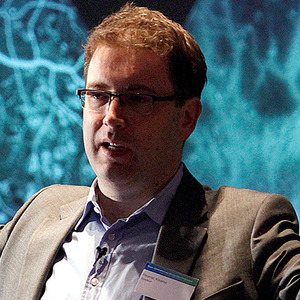Power List

Pearse A. Keane
Power List Profile
Consultant Ophthalmologist, Moorfields Eye Hospital NHS Foundation Trust. Professor of Artificial Medical Intelligence, University College London (UCL) Institute of Ophthalmology, UK
What is an interesting or little-known fact about you?
I spent a number of years doing Brazilian jiu-jitsu at a place across the street from Moorfields called London Fight Factory! I loved it but had to stop after I broke my finger and dislocated my knee-cap!
Why did you decide to pursue ophthalmology/your subspecialty?
I remember reading The Hunt for Red October by Tom Clancy when I was about 12 years old. The wife of the main character, Cathy Ryan, was an ophthalmic surgeon at Johns Hopkins in the US and I remember thinking it sounded really cool!
Who is someone in ophthalmology/your subspecialty that you feel has been particularly influential over the past 10 years?
I’ve been hugely influenced by Professor Sir Peng Khaw – the head of R&D at Moorfields and a glaucoma surgeon. He interviewed me when I joined Moorfields in 2010, and I remember clearly him asking about my long-term research vision. Sir Peng is a true visionary who has led much cutting edge research himself. But he also creates an environment for others to shine, encouraging people to think big and follow their dreams!
What’s been the biggest breakthrough in ophthalmology/your specific field over the last 10 years?
I think the advent of anti-VEGF injections for retinal disease has been the biggest by far. It has taken two of the common causes of blindness, AMD and diabetic retinopathy, and made them into much more manageable conditions.
Is there a particular tool, technological advance, or instrument you would not have been able to live without over the past 10 years?
Optical coherence tomography! Without the almost parallel introduction of OCT imaging, I don’t think anti-VEGF treatments would have been anywhere near as successful. OCT has transformed the understanding, diagnosis, and treatment of pretty much every retinal disease.
Do you have any strong opinions with which the rest of the field tends to disagree?
None that I would like to share at this point!
What would you like to see change in ophthalmology/your subspecialty over the next 10 years – and why?
I hope to see the widespread adoption of AI and for this to give doctors the “gift of time.” In other words, to allow us to spend more time in treating people with complex eye disease and less time focused on less serious disease or administrative work.
Where do you predict ophthalmology/your subspecialty will be 10 years from now?
In 10 years from now, I think healthcare institutions will have all moved their IT infrastructure to the Cloud. In combination with privacy protecting techniques, such as federated learning, this will allow us to gain insights in study with millions of patients rather than in hundreds or in thousands as we do at present. I look forward to telling medical students about “big” studies involving 250 patients and them looking at me like I’m talking about the silent movie era!
Do you have any personal missions for the next 10 years?
I would like to be involved in development and application of an AI system that brings benefits to one million patients. And once I’ve done this... to 10 million patients!
Who would you invite to your dream dinner party?
Barack Obama, Patrick Collison (CEO of Stripe), Rory Stewart (UK politician), Jennifer Doudna, JK Rowling.
